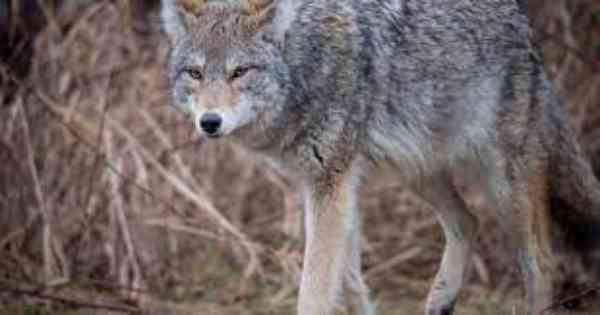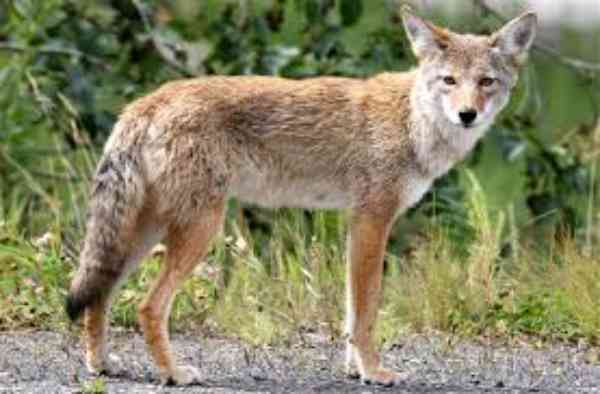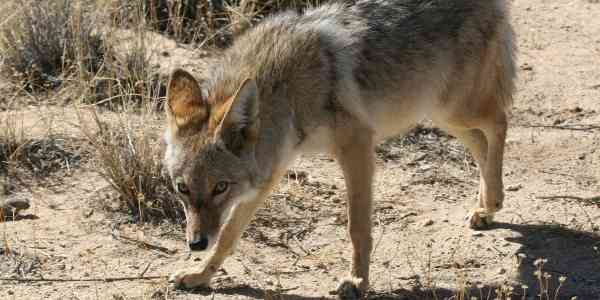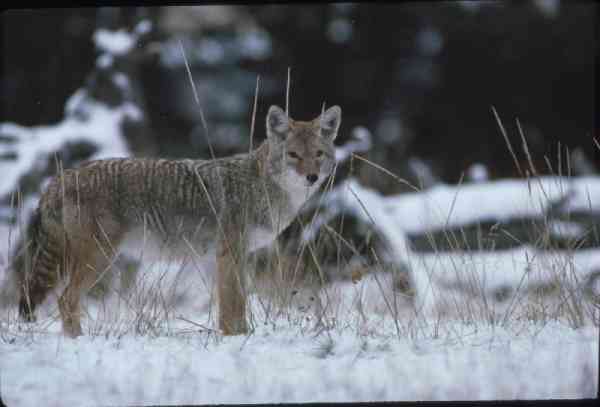Kansas is a state that prides itself on its abundant wildlife and open spaces, yet few residents know about the plentiful population of coyotes that now inhabit the state. Coyotes are known for their ability to thrive in many different habitats across North America, but they have also become popular residents of Kansas due to the number of food sources available. These intelligent mammals often make an appearance in rural parts of the state as well as within cities. Despite their growing presence within Kansas, coyotes remain largely misunderstood by many people due to inaccurate rumours and folklore surrounding them.

Table of Contents
Habitat
Coyotes are found throughout the entire state of Kansas, from the prairies and sand hills of western Kansas to the forests and wetlands in eastern Kansas. They prefer a wide range of woodlands and prairies, with access to available water sources. They benefit from large open fields for hunting rodents and rabbits as well as hiding in areas with thick vegetation for protection from predators. Coyotes build their dens in secluded areas such as stream beds or ravines, using fallen trees, boulders, banks or other natural materials for shelter to protect their young. In Kansas, they may also use burrows that were previously constructed by foxes or badgers.
Diet
Coyotes, an invasive species in Kansas, have a varied diet inclusive of meat and vegetables alike. They are known to hunt small mammals like voles, rabbits, and mice as well as large animals like deer. Without access to these larger animals, they switch their prey preference to birds, eggs, fish, insects, grubs and carrion. Vegetarian items like fruits berries and acorns are also staples in the diet of coyotes. Because these canines prefer meat diets when it is available to them it’s impossible for anyone to really know how much of an omnivore they really are in locations such as Kansas where there is plenty of vegetation to feast on.

Colour
Coyotes in Kansas vary from a light grey to a medium brown hue. Some individual coyotes are even black! This colour variation helps them blend into their environment and hide from predators. Colour-wise, lighter coyotes tend to fare best during the winter months when snow is present, as darker tones will stand out against the white backdrop of snow more clearly. Conversely, darker coyotes tend to do better in warmer weather and landscapes where they can more effectively blend into the dark underbrush and sunset palette of many areas in Kansas.
Size, Lifespan and Weight
The average size of these creatures is between four and six feet long, depending on their age and gender. These animals live anywhere from ten to thirteen years but some can reach nearly fourteen years in age. The average weight of an adult coyote is only 30 pounds but this varies again depending on the sex of the animal and which specific breed it belongs to.
Predators
Various animals hunt coyotes and contribute to the control of their populations. Known predators of coyotes in Kansas include larger mammalian predators like bears, wolves, tigers, and lions—which are obviously not native to the state. Most commonly though, grey wolves and bobcats can be found preying on coyotes. Hawks and eagles may also take advantage of smaller or injured coyotes caught out in open grasslands.

Reproduction
Coyotes in Kansas reproduce during the time of year between late winter and early spring. During this time the breeding pair of coyotes will typically establish themselves in a den, such as an abandoned burrow or a cave, to raise their young. Females may produce litters ranging from four to six cubs every 9–10 months depending on the season and availability of food. The cubs are born deaf and blind, but they quickly grow and develop with their parents’ help. By the middle of summer, after about two months with their parents, coyote pups can become independent and venture on their own for the first time.
Are there Coyotes in Kansas
Yes, Kansas is home to numerous wild animals, but many people are not aware that coyotes also live in the state. These elusive creatures often stay out of sight yet continue to play an important role in their ecosystem, controlling rodent and rabbit populations. Coyotes can be found throughout the Sunflower State from rural farms to urban parks and even suburban backyards.
Coyotes in Kansas City
Coyotes are a part of daily life in Kansas City. Often seen darting along highways and through parks, they have adapted to survive in an urban setting. Many people consider them pests or a nuisance, but coyotes provide benefits to our city by controlling rodent populations and scavenging for food scraps in trash cans and compost piles.

Hunting Coyotes in Kansas
Hunting coyotes is a popular activity in Kansas, and many locals consider it to be a favourite pastime. In addition to providing a challenging hunt, nearly anyone with basic hunting knowledge and an appropriate license can participate. Hunters may try calling wild coyotes in with noise makers like whistles, sirens and howlers.
Spot-lighting Coyotes in Kansas
Spotlighting coyotes has been gaining popularity in Kansas recently, with many keen hunters taking to the fields and forests in the early morning and late night hours. With expert knowledge of their behaviour and territory, as well as patience and persistence, hunters can easily find themselves coming home with a coyote pelt every time. Spotlighting isn’t just advantageous for finding coyotes; it also allows you to better understand their habits and potentially help control growing populations more effectively.
Trapping Coyotes in Kansas
Trapping coyotes in Kansas requires a hunter to possess both knowledge and skill. To have success trapping coyotes, the best locations are on open fields or trapped areas, especially near livestock paths or dens. The key to having success is knowing which bait or lure to use based on the time of year and even weather conditions that could influence a coyote’s likelihood of entering a trap. Although trapping is considered one of the most humane ways of managing coyote populations, it should always be done according to state laws and regulations.
References:
https://webapps.fhsu.edu/ksmammal/account.aspx?o=31&t=149
https://www.kpcc.org/2018-03-15/what-happens-when-a-coyote-bites-a-person

Rahul M Suresh
Visiting the Zoo can be an exciting and educational experience for all involved. As a guide, I have the privilege of helping students and visitors alike to appreciate these animals in their natural habitat as well as introducing them to the various aspects of zoo life. I provide detailed information about the individual animals and their habitats, giving visitors an opportunity to understand each one more fully and appreciate them in a more intimate way.









